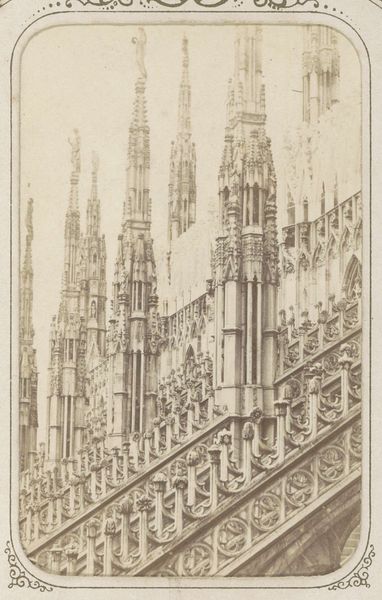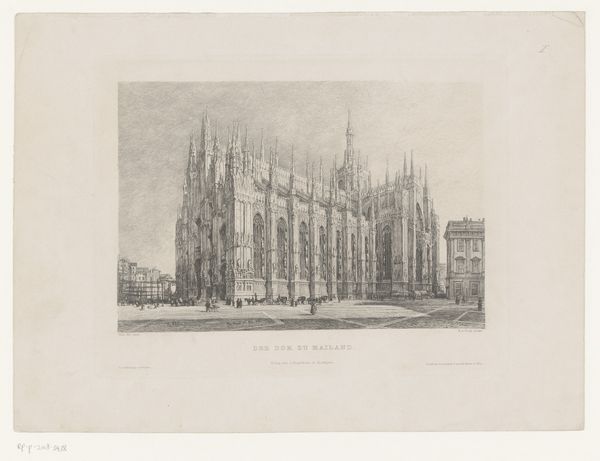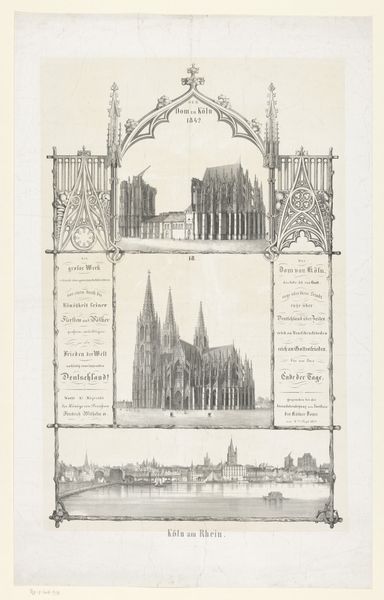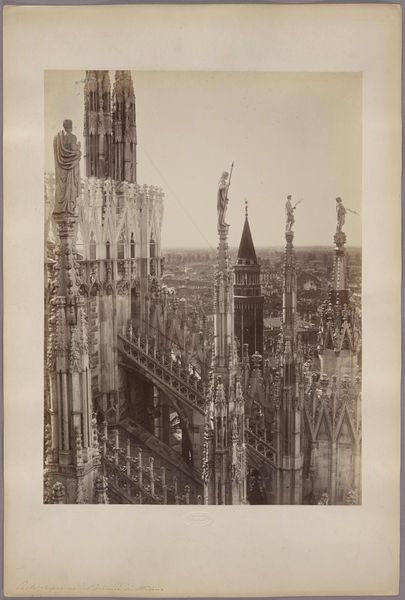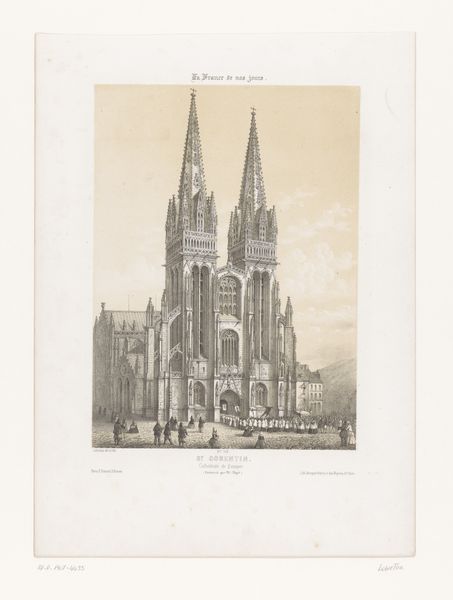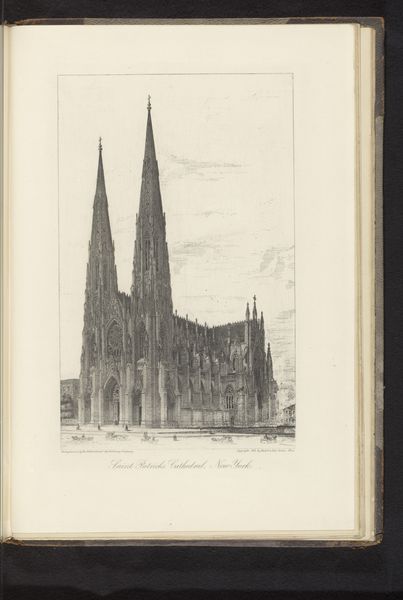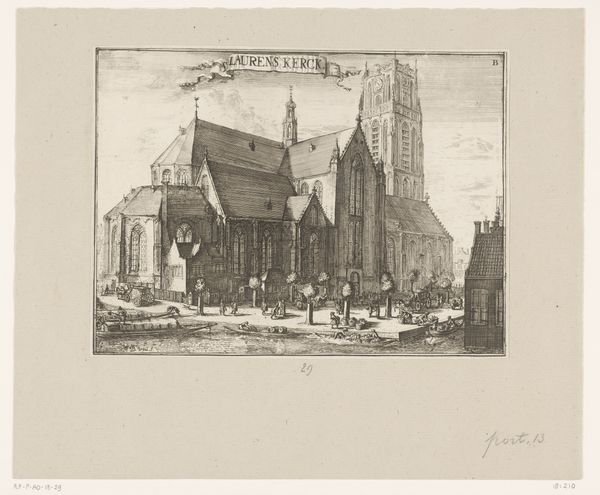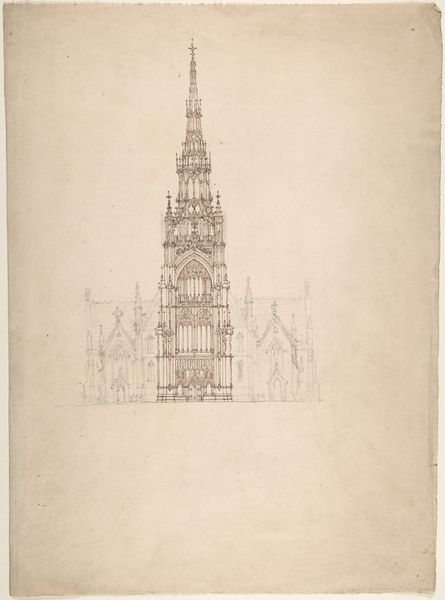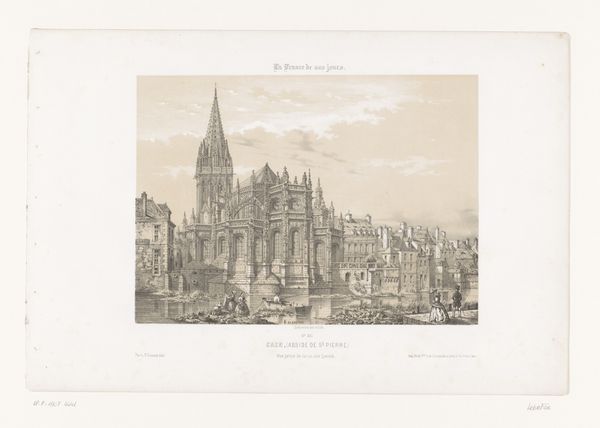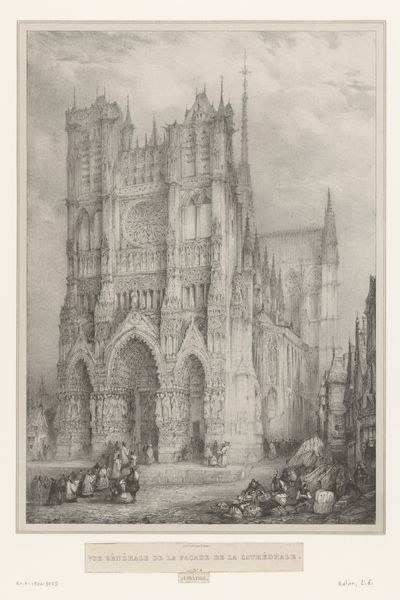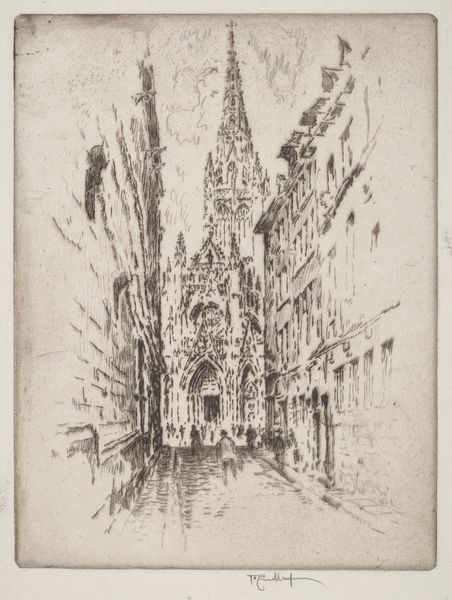
drawing, print, etching, architecture
#
drawing
#
aged paper
#
light pencil work
#
parchment
# print
#
etching
#
old engraving style
#
personal sketchbook
#
pen work
#
sketchbook drawing
#
cityscape
#
italian-renaissance
#
sketchbook art
#
architecture
#
realism
#
historical font
#
columned text
Dimensions: height 191 mm, width 218 mm
Copyright: Rijks Museum: Open Domain
Curator: The work before us, titled "Dak van de Dom van Milaan," presents a section of the Milan Cathedral rooftop. It’s an etching attributed to Francesco Citterio and thought to date from the 19th century. What are your first thoughts, Editor? Editor: It looks like something from a fever dream! Those spires, they pierce the sky, or the paper, with a fragile yet aggressive energy. So intricate, like lace made of stone. It feels both epic and delicate, a paradox, really. Curator: Indeed. The intricacy speaks volumes about the cathedral's construction and its place in Milanese society. As one of the largest cathedrals in the world, its construction involved not only architects and sculptors but also reflected civic pride and religious devotion. The Duomo was central to the city’s identity, physically and spiritually. Editor: And technically, the precision is astounding for an etching. Look how he's created depth and perspective using such light pencil work and cross-hatching. It is as if the cathedral is breathing, growing right off the parchment. Was Citterio an architect himself? Curator: To my knowledge, not specifically. It’s more likely Citterio was meticulously documenting existing structures, capturing their details for a wider audience through prints. There was a market for architectural views among educated elites during that era. Think of Piranesi and the desire for picturesque views that became symbols of cultural accomplishment. Editor: That makes sense, framing architecture as cultural trophies. I still get lost in the sheer volume of those spires! All pointing heavenward, as they say. What does it say that even the roofline becomes a forest of faith? It hints at the pervasive power of the church during that time, no? Curator: Precisely. Architectural representations reinforced ideologies. Seeing the Duomo roof allowed viewers to metaphorically possess a piece of the city and its powerful institutions. The imagery plays a vital public role in shaping and perpetuating the cathedral’s reputation, also extending it outwards. Editor: Well, Citterio has certainly extended its reach through this sketch! I feel I can almost hear the echo of chanting on those rooftops! I think his light pencil touch almost makes it all appear fragile, even if it is all so massive. Curator: It seems his goal was certainly to create a record of civic pride and, beyond the architecture, that legacy continues. Editor: Indeed, and in its depiction of gothic pinnacles, this rendering reveals the Duomo’s soaring artistic reach and endurance.
Comments
No comments
Be the first to comment and join the conversation on the ultimate creative platform.
